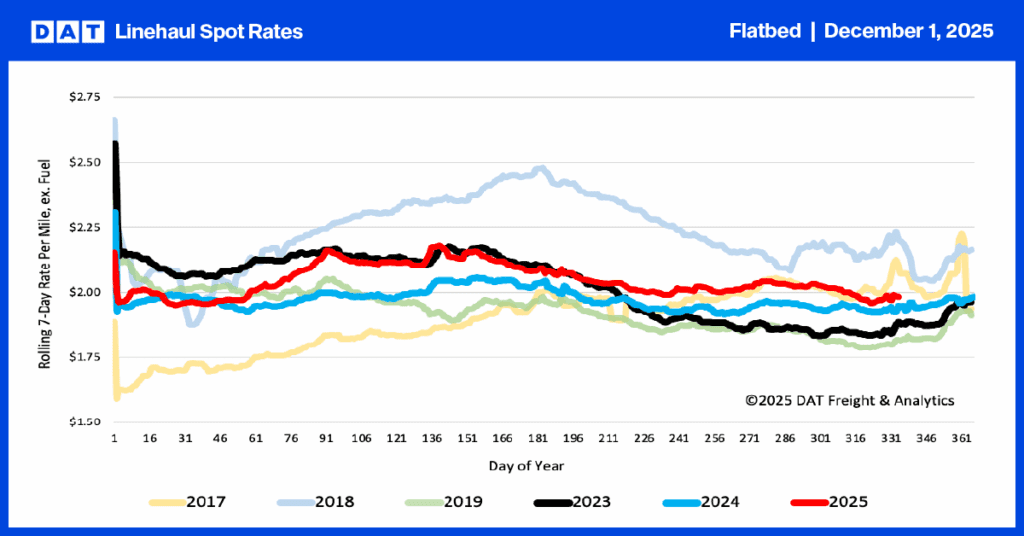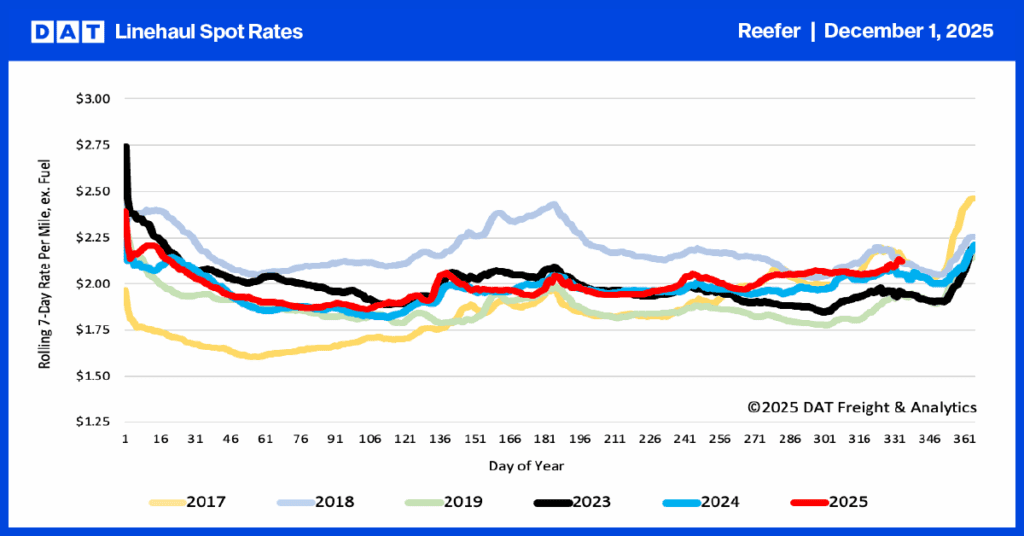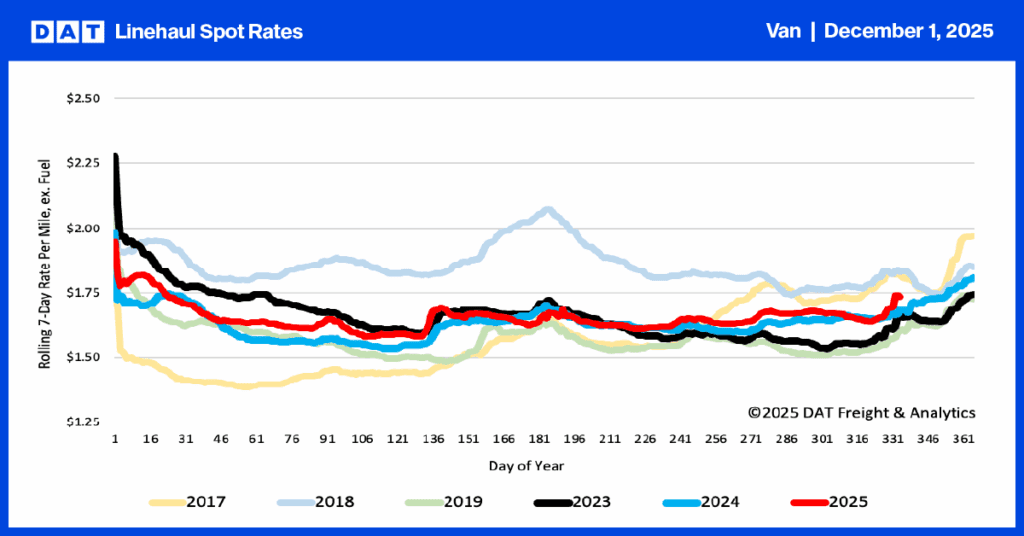
After a period of record revenues, this year small carriers and owner-operators have felt their profits squeezed by skyrocketing fuel prices, a softer spot market and rising operating costs.
In times like this, it’s important to recognize that the market is cyclical. For owner-operators who optimize their business and weather the storm, this means reaping the benefits when the market rebounds and setting themselves up for long-term success.
In addition, paying attention to industry trends allows you to anticipate market shifts before they happen. That way, you can adjust your prices or operations to keep your revenue as high as possible. In other words, getting caught off guard can cost you.
To avoid this, it’s essential to have the proper tools, resources and data to inform your decisions and overall success. For instance, carriers who utilize a resource like DAT Trendlines to view volumes, rates, and fuel prices can make better decisions when picking loads and planning their routes. Not just that, but with weekly updates on market trends and major strategies implemented by industry experts, owner-operators can find the specific data they need to plan for success.
Here are some ways owner-operators can use data to their advantage and optimize their trucking business when times are tough:
Book loads with easeMake your load board work for you
There are a number of factors that determine whether you should book a particular load or not. While the rate per mile is certainly important to consider, owner-operators also need to consider what equipment is needed for a load, the deadhead miles, delivery location, route information and much more to determine if it’s a good fit for their truck and their business.
Even modern platforms that help with booking loadsare not all made equal. Some can still make the load-booking process confusing and drawn out, especially when not all the data a trucker needs is readily available or easy to understand.
With a load board, owner-operators can setsearch filters to pinpoint the loads that exactly fit their criteria. When a new load fits that criteria, users will be notified immediately. They can also save favorable shipments and access them in one place.
On top of that, the ability to post your truck with a rate upfront may motivate brokers to call you , so you can focus on getting out on the road and getting paid.
Negotiate from a position of strength
Negotiating with brokers for higher rates is a necessary skill for any owner-operator who is looking to maximize their profits, but it’s not something that truckers necessarily take pleasure in.
The best way to make the negotiating process as painless as possible is by using data to understand exactly what your rate should be. When you can sit at the negotiating table with a broker and explain exactly why you are asking for a certain rate, there is a much higher chance that you’ll succeed in getting it.
One way that a carrier can gain this kind of in-depth insight is through the DAT One app, which shows the average rates paid on a lane in the past 15 days. You can also see current fuel prices, market conditions and trends for your specific equipment.
Specifically, a carrier can speak with a broker and tell them that the rate they’re offering for a load does not match the current industry rates. They can also factor in truck route information to gain visibility into any relevant safety conditions, tolls, and whatever else may affect the rate they should receive.
Beyond that, data about the brokers themselves can provide a massive leg-up for owner-operators. Having information on a broker’s credit score, average days to pay, and reviews can help determine whether a particular broker is a good fit for your business.
Armed with all this industry data, owner-operators can ensure that they are getting the loads they want at the price they need.
Know where to control costs
Managing operating costs is the name of the game for owner-operators. The less they have to spend on fuel, tires or insurance, the greater their profits will be.
Naturally, fuel costs are the top concern. The best changes any trucker can make to save on fuel is to improve fuel efficiency by reducing speed and time spent idling. Making a habit of easing off the gas pedal can save owner-operators a lot in the long run.
Other key ways to ensure that drivers save on fuel include reducing deadhead miles or altering their trucks’ aerodynamic profile. Owner-operators can also take advantage of trucking fuel cards, which allow them to save directly at the pump.
The DAT One app integrates with fuel cards, providing drivers visibility into discounted fuel prices at any given location. With the ability to compare fuel prices, DAT One app users are able to save up to $1,000 per month in fuel costs.
Beyond fuel, it’s important to keep a close eye on all of the smaller costs. This includes buying food on the road or paying tolls. It’s easy to lose track of these costs and can add up quickly. Planning meals and routes in advance can minimize these costs and contribute to maximizing profits.
Find more business resources
The current market is a major area of concern for owner-operators, but DAT is committed to being your partner in the passenger seat, providing you with the insights you need to optimize your trucking business and outlast challenging times. To learn more about growing your rates on the go, check out The DAT Exchange.


